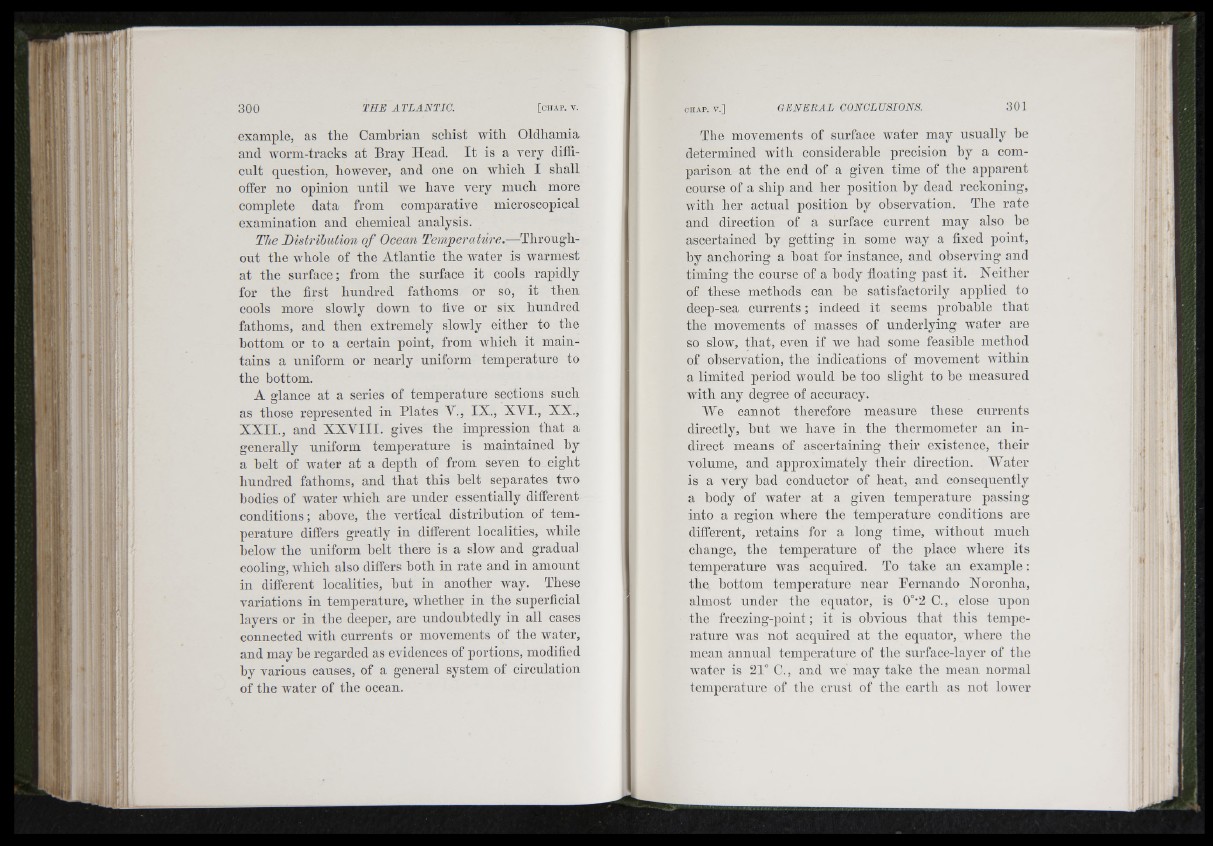
. î: ■ j
i\
g ;
çÌS'
; rii
Mi , 'u Ì
n i t o
3 ;N
liìM'*
I
, “ i
Il f
M'
:'5 : !.. i -
l'i
i ■
11
i
i
example, as tlie Cambrian scbist witb Oldbamia
and AA’orm-tracks at Bray Head. It is a A'ery difii-
cnlt question, liowever, and one on Avbicli I sball
offer no opinion nntil we have very mnch more
complete data from comparative microscopical
examination and chemical analysis.
The Bistrihulion of Oeecm Tempeixihlre.—Throngh-
ont the Avhole of the Atlantic the water is Avarmest
at the surface; from the surface it cools rapidly
for the first hundred fathoms or so, it then
cools more slowly doAvn to five or six hundred
fathoms, and then extremely sloAvly either to the
hottom or to a certain point, from AA'hich it maintains
a uniform or nearly uniform temperature to
the bottom.
A glance at a series of temperature sections sucli
as tbose represented in Plates V., IX., XVI., XX.,
XXII., and XXVIII. gives tbe impression th a t a
generally uniform temperature is maintained by
a belt of Avater at a depth of from seven to eight
hundred fathoms, and th a t this belt separates tAvo
bodies of water which are under essentially different
conditions ; above, the vertical distribution ol temperature
differs greatly in different localities, while
heloAv the uniform belt there is a slow and gradual
cooliucO: ,^ AA'hich also differs hoth in rate aud in amount
in different localities, b u t in another way. These
variations in temperature, whether in the superficial
layers or in tbe deeper, are undoubtedly in all cases
connected Avitb currents or movements of tbe water,
and may be regarded as evidences of portions, modified
by various causes, of a general system of circulation
of tbe water of tbe ocean.
Tbe movements of surface Avater may usually be
determined Avitb considerable precision by a comparison
at tbe end of a given time of tbe apparent
course of a sbip and ber position by dead reckoning,
AA'ith her actual position by observation. The rate
and direction of a surface current may also he
ascertained by getting in some way a fixed point,
hy anchoring a boat for instance, and observing and
timing the course of a hody floating past it. Neither
of these methods can he satisfactorily applied to
deep-sea currents ; indeed it seems probable th a t
the movements of masses of underlying Avater are
so slow, that, even if Ave had some feasible metbod
of observation, tbe indications of movement Avitbin
a limited period would be too slight to be measured
with any degree of accuracy.
We cannot therefore measure these currents
directly, hut Ave have in the thermometer an indirect
means of ascertaining their existence, their
volume, and approximately their direction. Water
is a very had conductor of heat, and consequently
a hody of water at a given temperature passing
into a region Avhere the temperature conditions are
different, retains for a long time, Avithout much
change, tbe temperature of tbe place Avbere its
temperature Avas acquired. To take an example ;
tbe bottom temperature near Pernando Noronba,
almost under tbe equator, is 0°-2 0., close npon
tbe freezing-point ; it is obvious tb at tbis temperature
Avas not acquired at tbe equator, Avbere tbe
mean annual temperature of tbe surface-layer of tbe
Avater is 21° C., and Ave may take tbe mean normal
temperature of tbe crust of tbe eartb as not loAver